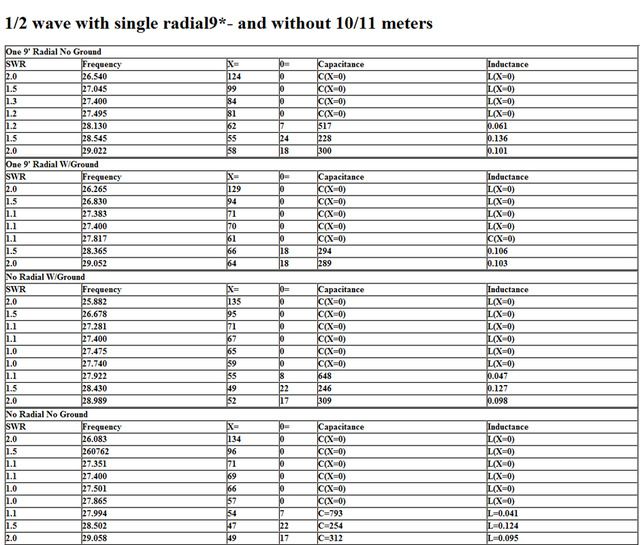results

I gave you some numbers. If you can find anything useful in them . . .
Perhaps someone can tell me what to think of them.
With just a brief look before my eyes crossed, I don't think I see much difference. That is what I tried to say happened when I compared my A99 with my VA1 connected right at the feed point, with GPK, without GPK, with the mast in contact with the antenna, and without the mast in contact with the antenna as grounded or not.
I'll note again Homer, that I don't think I ever saw X=0, over such a range of frequencies like you consistently do, but the almost uncanny and consistent results you got are remarkable to me.
As I've said before, it seems like nothing I did to the A99, except raise it up, made any notable difference in the antennas match with maybe a little fluctuation in resonance that was maybe similar to what Homer reports.
I didn't see the feed line attached or not, make much if any difference to the match either, even though it was suggested I isolated without raising the antenna above the mast. I could see a bit of change in frequency when I changed the feed line length, but the match was not off the charts as I would expect...if I removed the counterpoise that we all feel is necessary for the proper function of any antenna.
Without knowing for sure and beyond question, I don't think the A99 significantly uses the mast/feed line for its counterpoise function that Kirchoff's rule addresses...regarding the two ports, in and out, showing the same magnitude...if tuned and installed correctly.
I don't want to crow too much yet, but I think Homer, I may have seen similar or close to what you see, at least in the lack of difference area. I wish I still had my Antenna Work Sheets that I threw away for all the work I did on my A99.
I wish I could explain more, but I still don't know but one thing, I didn't see much difference either with all of our iterations.
Last edited:


